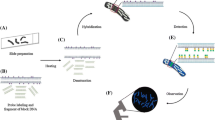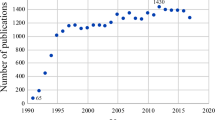Abstract.
Cytogenetic maps, as the name implies, incorporate data from genetic maps with actual cytological features of chromosomes such as centromeres, knobs and, recently, fluorescence in situ hybridization (FISH) signals. Integration of genetic and cytological maps has been accomplished primarily in two ways. The first general strategy is to create a chromosome breakpoint, then determine its cytological position using microscopy, and its position on the genetic map using genetic techniques. A second strategy is by the direct hybridization of genetically mapped sequences onto chromosomes by FISH. The aim of this review is to provide an overview of the state of this field in plants. We review the history and uses of cytogenetic maps, and discuss future directions based on what we have learned.
Similar content being viewed by others
Author information
Authors and Affiliations
Additional information
Electronic Publication
Rights and permissions
About this article
Cite this article
Harper, L., Zacheus Cande, W. Map** a new frontier; development of integrated cytogenetic maps in plants. Funct Integr Genomics 1, 89–98 (2000). https://doi.org/10.1007/s101420000013
Received:
Accepted:
Published:
Issue Date:
DOI: https://doi.org/10.1007/s101420000013




